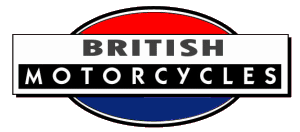

 So what will
it cost?
So what will
it cost?The short answer is: It depends on what you want. Helpful, huh?
Small machines can be picked up very cheaply: a few hundred pounds will buy one of the less-glamorous small-capacity (150 to 250cc) motorcycles that were the mainstay of the British working man from the Twenties through to the late Fifties. They are dismissed as "grey porridge" by many enthusiasts, but is performance really that important in a machine that's 40 to 60 years old? They're certainly a good low-cost introduction to the world of classic and vintage bikes.
Go over 350cc and you'll start paying more; you'll also find that on larger mounts, the age and rarity make more difference. For example, you should pick up a good 350cc BSA B31 from the Fifties for less than £2000, possibly more like £1500, whilst you could expect to pay double that for a desirable vintage machine of the same size, such as a mid-Twenties 350cc Rudge or Norton.
Prices then remain much the same for the more common larger bikes. They take another sharp hike for the most desirable larger machines - vintage V-twins, and rare/sporting mounts like the Gold Star. If you're well-off you might consider a 1000cc Vincent v-twin; if you're rich you might consider a similar-sized Brough Superior.
Triumphs, for some reason, always seem to be more expensive than equivalent bikes of a similar age and capacity.
Veteran (pre-1915) motorcycles are much harder to quote prices on, but are generally quite expensive as there are so few of them left. Prices vary enormously depending on capacity, desirability etc, but typical good examples tend to sell for £4000 to £6000.
So there you are: something for every wallet. All prices quoted above are very rough estimates, for guidance only, for roadworthy but not immaculate newly-restored examples (which often tend to be over-restored and over-priced - well-used but well-cared-for originality is far better). Prices vary depending on age, condition, collectability, rarity, etc. Dealers will probably charge more, and if a bike has "history" - old photos, original registration document, bill of sale, a famous former owner (like George Formby's Norton) and especially a well-documented racing history, the price can increase considerably.
Generally cost less than you might think. Obviously, some parts are no longer obtainable, and if you need a replacement you'll need to find someone who can make replacements from a pattern or drawing. Many parts, though, are re-manufactured in batches by various clubs and enthusiasts, and a surprising number of spares for the more popular post-war machines are still widely available, generally costing less than their modern-day equivalents.
If you need to pay someone to carry out work on your behalf, ask around fellow enthusiasts (join a club, go to shows, rallies and autojumbles). Many of these enthusiasts are skilled engineers and mechanics, often with well-equipped workshops, and their rates tend to be far lower than expensive commercial operators.
It's nearly always worth joining an owners club, if one exists for your make of machine.